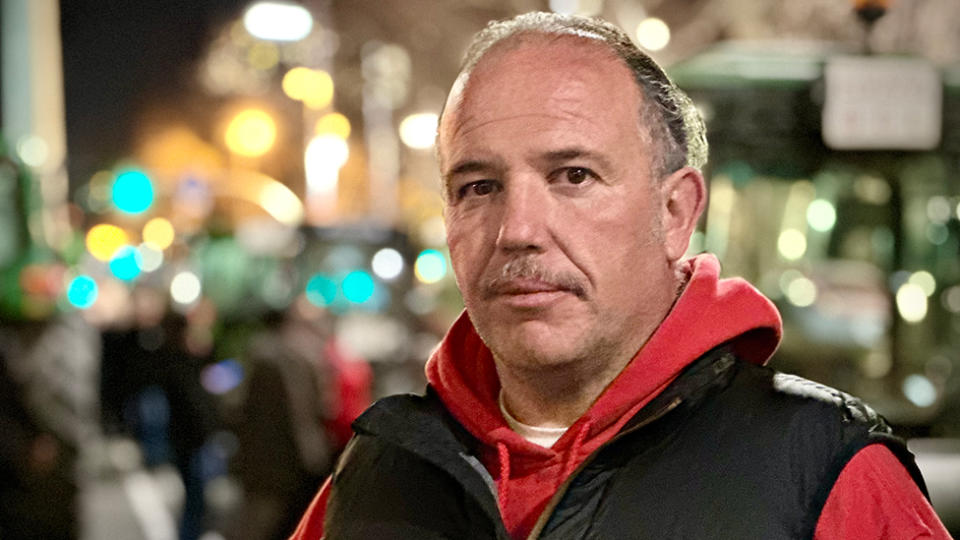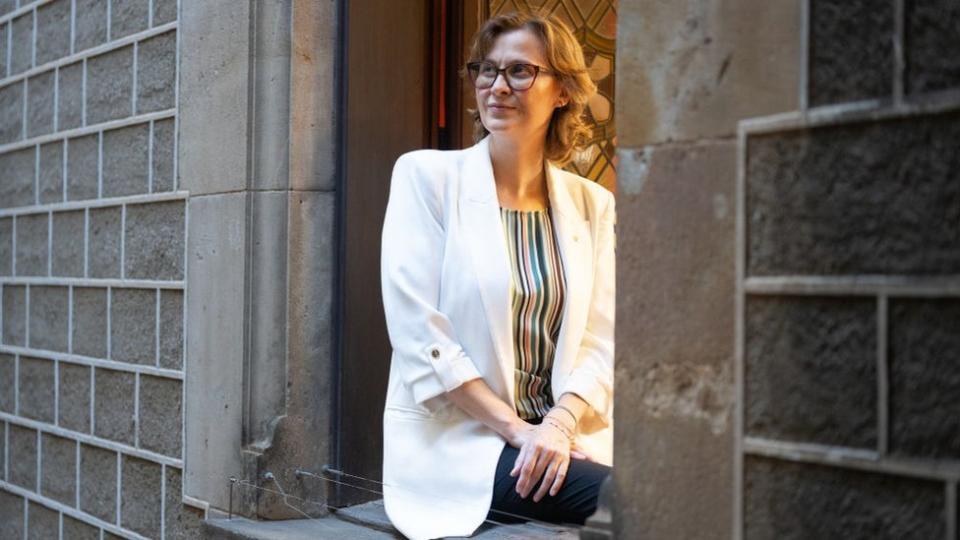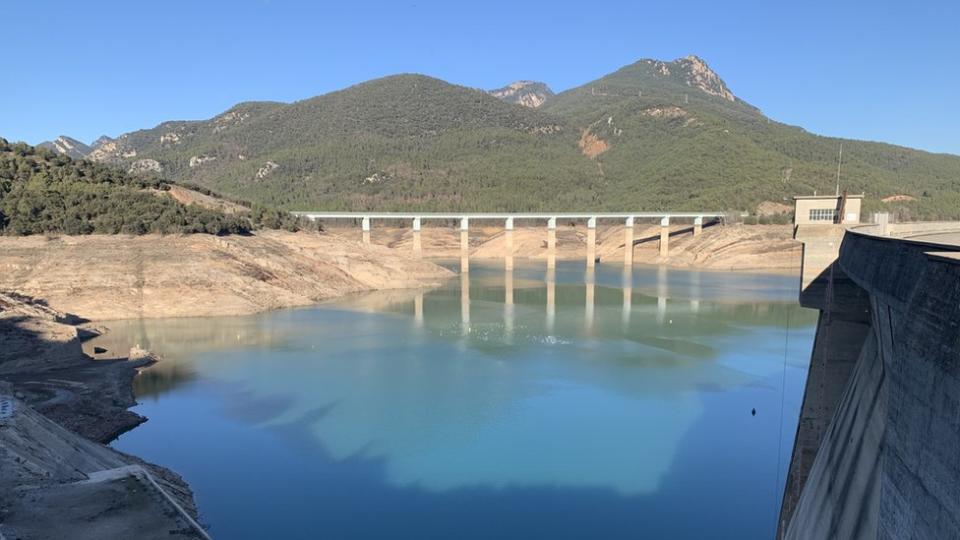The smell of roasting artichokes wafts past a row of dozens of tractors parked in central Barcelona as rock music blares from speakers and wine is poured into plastic cups.
The scene is festive, but this is a protest, not a party. Hundreds of Catalan farmers have entered their region’s capital to express their grievances, with the climate at the center.
“We are now in a situation where we are dealing with complete drought,” said Xavier Oliva, an artichoke farmer who owns land just outside the city. “If it doesn’t rain, you can’t plant anything.”
Oliva and his colleagues are protesting against a range of issues, including what they see as overly strict EU agricultural rules. But the most immediate threat to their profession is a lack of water, and they are calling for more immediate help from the regional government.
By the end of January, the water level of the reservoirs supplying Barcelona and surrounding towns in the Ter-Llobregat basin system had fallen, on average, to below 16% of capacity.
Catalonia’s regional government responded by declaring a state of emergency, affecting around six million people. This led to the introduction of a series of restrictions on water use.
For livestock farmers this means only half the water they would normally use, and for arable farmers like Mr Oliva it means an 80% reduction in water use.
“We will plant 80% less crop than normal, or even less than that,” says Oliva, who is part of the El Prat agricultural cooperative, as he looks ahead to the coming months.
“It brings us closer and closer to a situation where we have to close our farms.”


Other measures introduced as part of the state of emergency include limiting the amount of water that town halls can use per day to 200 liters per person, with water pressure reduced in towns where consumption is particularly high. Also, the river flows are regulated, greatly reducing their flows.
A number of restrictions have already come into force over the past year, with decorative fountains switched off and strict controls on watering gardens and parks and the use of water for cleaning streets. However, the new measures, which include the arrival of boatloads of water from other Spanish regions if the drought continues, are much more drastic.
“We wanted to be careful and then start to anticipate, plan and be prepared for the worst-case scenarios, like the one we have now,” said Meritxell Serret, the Catalan foreign minister.
Catalonia experienced a drought in 2007-2008, but it lasted only about half the duration of this drought, which started in autumn 2020, and is the worst since records began more than a century ago.
A 2021 drought plan drawn up by the regional government has sought to manage the impact of the current period of abnormally low rainfall. Irrigation systems have been modernized, leaks in water pipes have been stopped and a total of €2.4 billion is expected to be invested in increasing water production capacity in the region by 2027.
There has been a big push to diversify Catalonia’s water sources away from rainfall, meaning 55% of consumption in the drought-hit area is covered by desalinated and recycled water, with these sources increasing their production over the next three will double every year.
“What we have tried to emphasize over the last three years is how we can prepare for these drought scenarios, how we can be more resilient to the negative expectations regarding climate change in the Mediterranean,” said Ms. Serret.


According to the UN Climate Programme, temperatures in the Mediterranean are rising 20% faster than the global average. Other parts of Spain, such as the southern region of Andalusia, are also experiencing drought, although only Catalonia has declared a state of emergency so far.
On the outskirts of Barcelona, Canaletas, a company that makes and exports drinking fountains, is implementing new standards imposed by the regional government, including a 25% reduction in water consumption by industries.
“I think the industry can adapt to that by 25% – not the entire industry, but at least most of them – if it is only for a short time,” says the company’s owner, Jordi Morera. “But if this continues indefinitely, it will become a serious problem.”
Canaletas, which employs 45 people, is installing water meters in its factory to gauge where savings can be made. Mr Morera says toilets and bathrooms are where a lot of water consumption will be reduced.
However, he is concerned about the feasibility of the new guidelines. “If your company increases its production or its workforce, it decreases [water consumption] will be impossible,” he says.


Other business leaders believe the industry should be compensated for the impact of the drought and water use restrictions.
“Measures must be taken to compensate for the damage to companies in the form of formal financial aid,” said Jaume Roura, president of UPM, the metal industry association in Barcelona.
Mr Roura also says the Catalan government should have acted more quickly on issues such as pipeline leaks in the region. His association is currently evaluating the potential impact of the drought on the industry.
“Apart from industrial production itself, water is necessary for the entire operation of industry – healthcare, workforce, food – and so we are trying to understand exactly how big an impact this will have,” he says.
One consequence he is certain of, however, is that less water will mean higher prices. “The consumer of the final product will have to pay for the cost increase caused by the lack of water in the production chain,” he says.